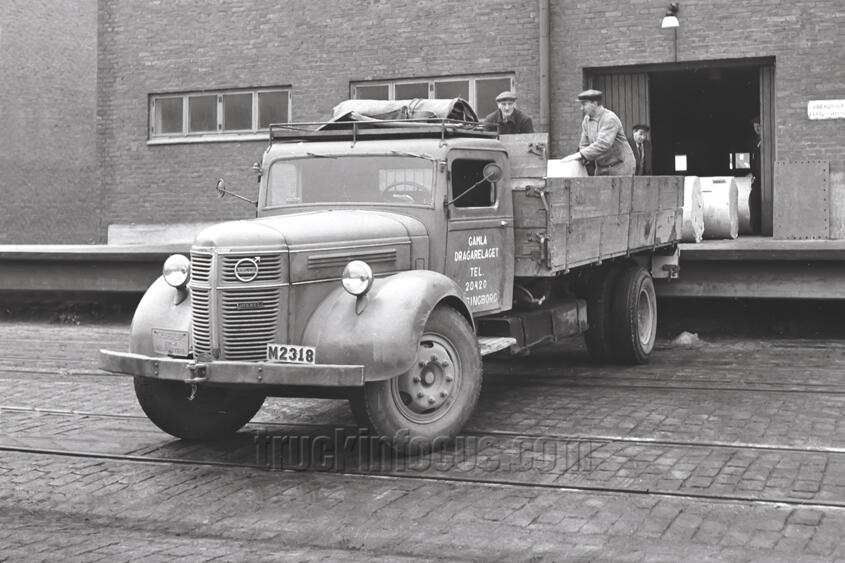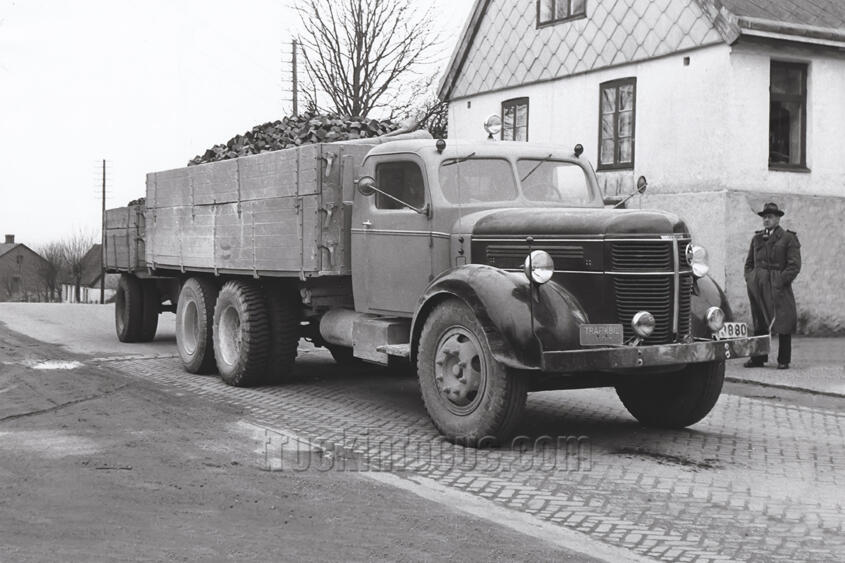The Volvo Chronicle
Page 2
By Christoph Büch (Berlin 2024)
In the 1930s, Volvo modernized its vehicles both externally and technically. Following the international competition, the company offered new all-steel cabs with a sloping front and optional heating. The LV 76 to LV 97 models with hydraulic four-wheel brakes covered the weight classes from 3 to 4.7 tons. The proven six-cylinder continued to be offered as a Hesselman engine with 75 and 90 hp. The LV 81 to LV 95 series served the heavier weight classes from 5.4 to 7 tons gross weight. From 1932 to 1935, Volvo produced 4692 examples of the LV 71 to LV 73 series in the weight class around 5 tons.
Volvo had now been building technically solid trucks for seven years. Externally, however, they had stuck to the appearance of the twenties with the vertical radiator grille. From 1935, the design changed to flowing lines. The rounded radiator grille now had a curve at the front. The cabs were also no longer square, but were given rounded roofs. These changes initially affected the LV 76 to LV 78 series.
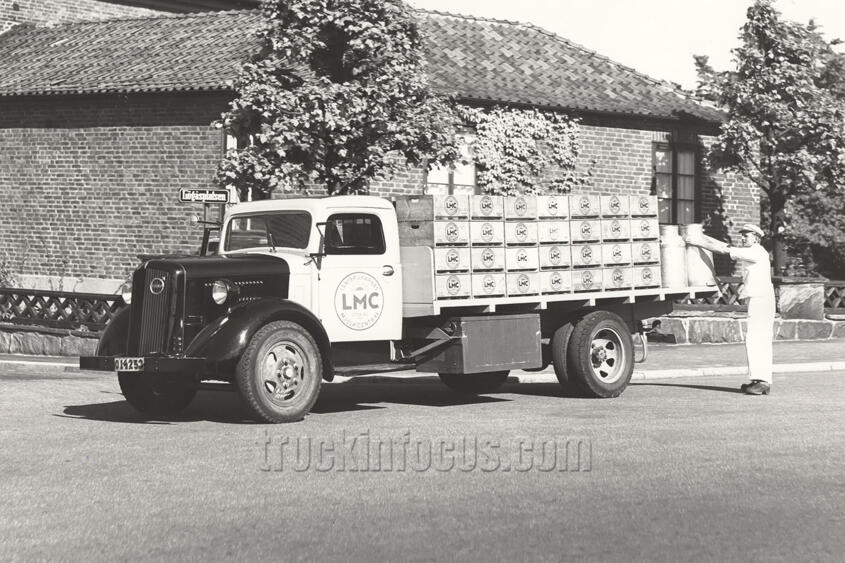
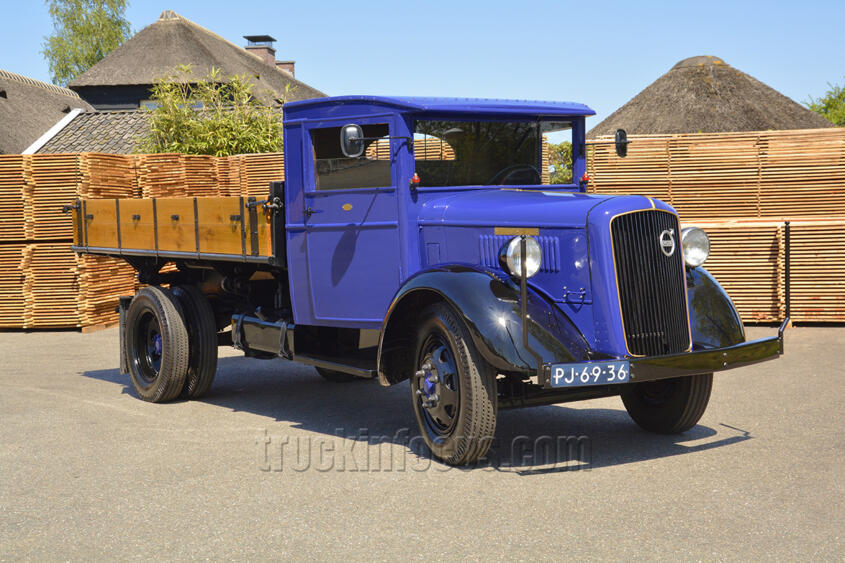
From 1934, Scania-Vabis was the only Swedish competitor for Volvo, as the truck manufacturer Tidaholm, now almost forgotten, had to declare bankruptcy after almost thirty years of production. Scania-Vabis specialized in the heavier weight classes and produced several hundred chassis per year, while Volvo's unit numbers in the lighter weight classes were significantly higher. However, the company now wanted to compete with Scania-Vabis with heavy vehicles as well. In 1937, a newly developed six-cylinder engine with an initial displacement of 6.7 liters and later 7.6 liters was introduced. This engine originally produced 120 hp, later 140 hp, and was also offered as a Hesselman version. With a new three-axle model, Volvo now also covered weight classes up to 13 tons. The LV 180 to LV 290 series, externally recognizable by their extended hood, were given the nickname "Long-Nose". The equipment options were remarkable: Customers were offered two engines with 4.4 and 6.7 liters displacement as gasoline or Hesselman versions, single or tandem axle drives and three wheelbases. From 1937 to 1951, a total of 3283 examples of these series were produced. The solid and durable vehicles covered the weight range from 7.5 to 13 tons gross weight.
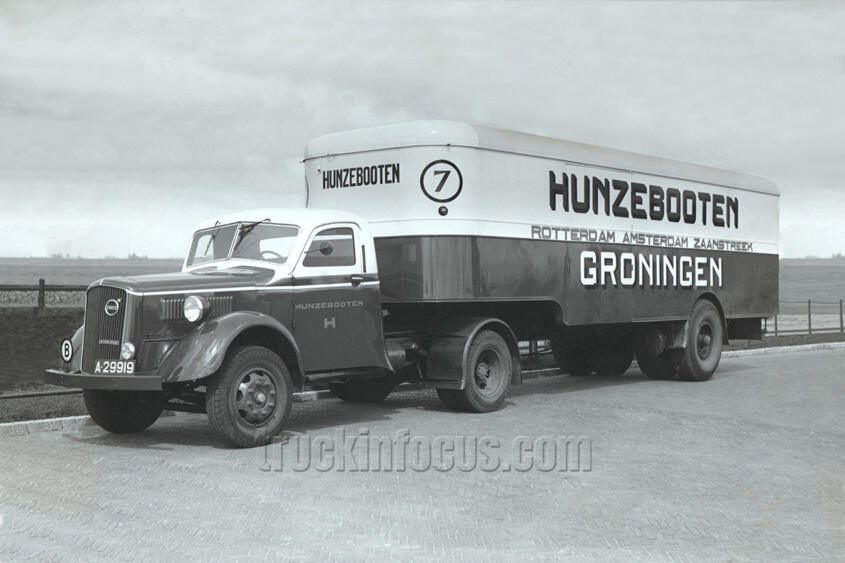
In 1938, Volvo introduced completely redesigned vehicles, the LV 105 and LV 110, which took their design cues from foreign competitors such as Ford. Known as "Pointed-Noses," they were intended for the light weight range of 2.8 to 5 tons and were produced in numbers approaching 5,000 units until 1950.
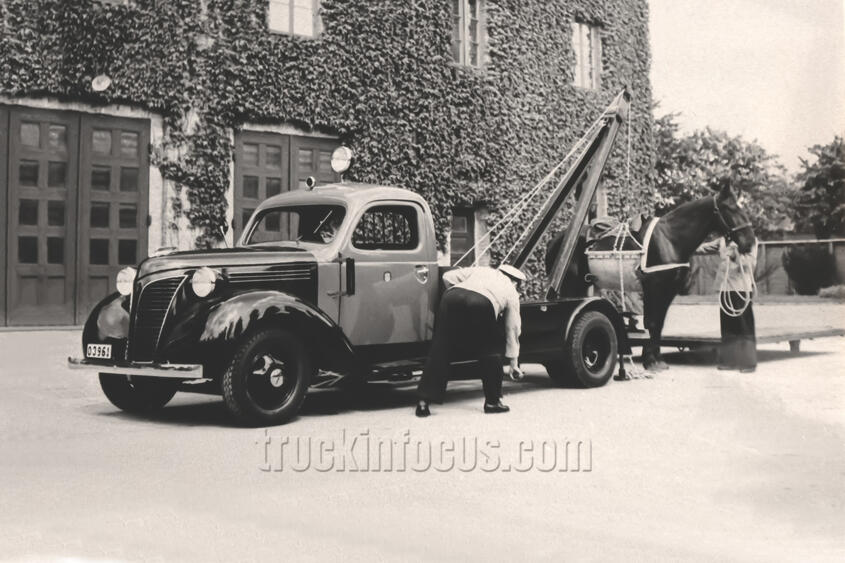
The "Pointed-Noses" were joined in the higher weight classes of 6.4 to 9 tons by the "Round-Noses" of the LV 120 to LV 140 series from 1939 onwards, which meant that the angular appearance of earlier ranges was consigned to history. In terms of design, chassis construction and quality, Volvo was now on a par with its international competitors.
